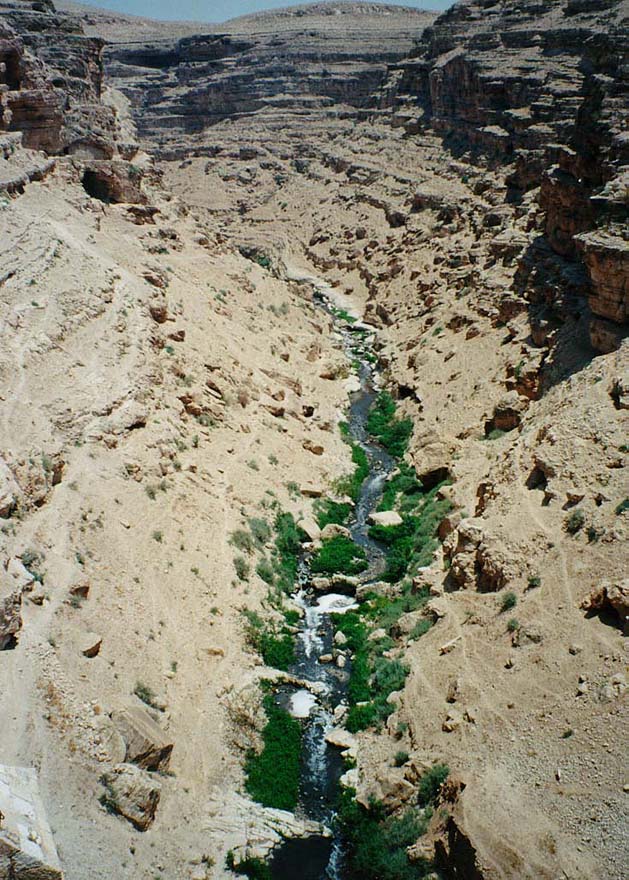
Deserts make wonderful retreats for ascetics. A good view is nice, too. Welcome to Mar Saba, just northeast of Bethlehem. It's the monastery of St. Saba and often described as the most remarkable building on the West Bank. It may well be so, though it lies at the end of a dead-end road passing eastward through the bleak village of Ubbeidiya and an immense garbage dump. Nineteenth century travelers often arrived from the east, by donkey on a journey uphill from the Dead Sea. For them, the view of Mar Saba, as they rounded the last canyon bend and beheld the monastery, must have been breathtaking.
The Kidron flows east from Jerusalem and soon descends into a deep canyon known as Wadi Nar, "the valley of fire." The greenery is misleading, for the stream is simply Jerusalem sewage; historically, the valley would have been dry nearly year-round. The monastery lies immediately behind the camera, which looks upstream toward Jerusalem.
The outer wall of Mar Saba is built into the right-bank canyon wall. Wadi Nar continues to the Dead Sea; another of its pronounced zigzags can be seen in the center of the photograph. There is no grand entrance to the monastery. Instead, the road zigzags down to a landing near the tiny blue door, built strongly as a defense against Bedouin. The monastery is ancient, but the wall was rebuilt and heightened by 19th century Russian pilgrims.
There is one viewpoint from which one can look over that wall and into the mostly deserted monastery. Once crowded, there were only three monks residing here when these pictures were taken. On the far side of the canyon wall are some of the tiny caves once inhabited by hundreds of them.
The view up from Wadi Nar.
The main door, with iron plating and bolting.
A companion door at the base of the monastery and opening to Wadi Nar and, in a small cave, the trickle of freshwater that is the monastery spring.
Inside the monastery, trees are irrigated with rainwater captured in cisterns.
The view from the main entrance and looking over the staircase leading to the church.
The church itself. Nearby are caves filled with the bones of monks.
St. Saba himself, in the church.